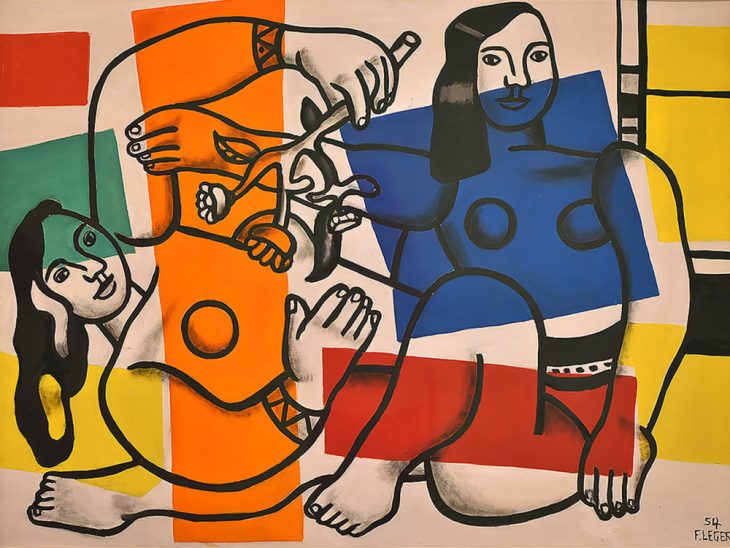Fernand Léger
Fundamental Paintings to Understand the History of Painting
We could make this publication thanks to small donations. How is 3 minutos de arte supported?
Two Women Holding Flowers (1954). Fernand Léger
Oil on canvas. 97.2 cm x 129.9 cm
Tate Modern. London
Léger is one of the great painters of the Parisian avant-garde of the 20th century. In his work, we find, as in the works of few artists, the spirit of modern times, of the machine, and of industrial and urban civilization.
At first, he was a leading figure in Cubism. But his Cubism evolved towards the cylinder and symbolic images of mechanization. And so Léger ended up being considered one of the artists who, with greater vitality, perceived the beauty of the machine and the intimate relationship with which it is linked to the lives of men.
At that stage, he painted a kind of still life or unique still life, different from anything that had been seen in that genre for centuries: he mixed traditional elements (fruits, leaves) with pieces of mechanical appearance (invented by him).
Later, in his last stage (to which this work belongs), his main concern was the social function of art in the midst of this industrial civilization.
Then he moved towards a painting of extreme simplicity that provokes sensations or stimuli without the need for interpretation; he brought art closer to the popular classes.
He established a distinct style (so distinct that “painting like Léger” is a good way to describe it) based on the separation of line and color.
The human figure, which has a certain primitive air (some say “a certain robotic air”), and the other elements of the work are drawn in thick black lines; and the color is scattered in different areas of the canvas, clearly independent of the drawing. Hypnotic simplicity.
Recommended links:
Léger and the Art for the Working Class.
Fundamental Differences between Analytic and Synthetic Cubism.
Fundamental Paintings to Understand the History of Painting: Les Demoiselles d’Avignon, Picasso.
You can also find more material using the search engine.




0 Comments